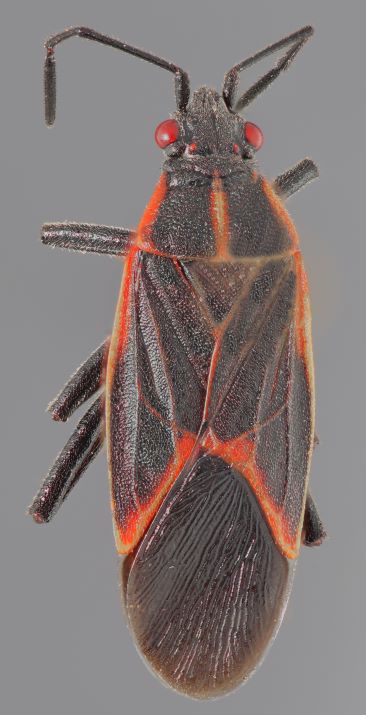Boxelder Bugs

Figure 1: Boxelder bug. Photo by Lauren Kerzicnik
Damage/Behavior:
They feed on the seeds of maple, ash, and several fruit trees. Boxelder bugs hibernate in groups in protected locations. They become a nuisance when, after building up large populations at the end of the summer, they begin invading structures seeking places to hibernate through the winter. Extreme boxelder bug infestations are typically correlated with the amount of boxelder and other host seeds available and the length of the growing season. Populations tend to be higher during hot, dry summers. Boxelder bugs typically accumulate on sunny, south-facing walls.
Management:
Non-chemical:
- Seal openings to buildings, especially on south and south-west facing walls.
- Repair all screens.
- Install door sweeps.
Chemical:
- Spot treatments with contact insecticides along windows and other entry cracks can help.
- Applications of insecticides to the attic may be helpful in extreme cases.
- Spraying of insecticidal soaps or soapy mixtures on the outside of walls can help.
- Applications to the interior living area are not appropriate for boxelder bug control.
Disclaimer: These recommendations are provided only as a guide. It is always the pesticide applicator’s responsibility, by law, to read and follow all current label directions for the specific pesticide being used. The authors and Montana State University assume no liability resulting from the use of these recommendations. The Montana State University Extension Service is an ADA/ EO/AA/Veteran’s Preference Employer and Provider of Educational Outreach.
